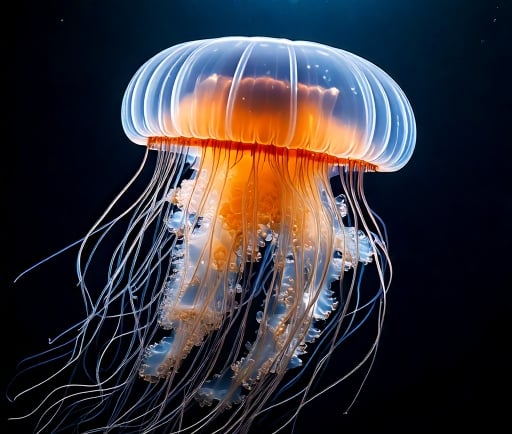The Immortality of Turritopsis: Understanding the Science Behind the Immortal Jellyfish


Introduction to Turritopsis
The Turritopsis dohrnii, commonly referred to as the immortal jellyfish, has captivated scientists and enthusiasts alike with its unique ability to revert to an earlier life stage. This fascinating organism showcases an extraordinary survival mechanism, enabling it to escape the inevitable processes of aging and death that affect most living creatures. As we delve into the biological processes surrounding Turritopsis, we will uncover what makes this jellyfish a marvel of nature.
The Life Cycle of Turritopsis
The life cycle of the Turritopsis jellyfish is complex and multifaceted. Unlike many invertebrates, this species possesses the remarkable capability of transdifferentiation—a process that allows it to transform its cells into different types. When faced with threats, such as injury or environmental stress, the immortal jellyfish can revert back to its polyp stage, essentially restarting its life cycle. This polyp stage is a young jellyfish form, where it can grow anew, thereby circumventing death. This unique feature is why Turritopsis is often dubbed “biologically immortal,” as it can potentially live indefinitely under optimal conditions.
Scientific Findings and Implications
Researchers are intensely studying the Turritopsis species to unlock secrets held within its genetic makeup. Understanding how this jellyfish manages cellular reprogramming could have profound implications in fields such as regenerative medicine and aging research. For instance, insights gained from Turritopsis might inform strategies for repairing damaged tissues or reversing aging in humans. The pursuit of immortality has long fascinated humanity, and studying the immortal jellyfish could provide significant breakthroughs in biological sciences.
In conclusion, the Turritopsis jellyfish stands as a testament to the wonders of evolution and adaptation. Its unique ability to defy the traditional life cycle encourages further exploration into the potential for cellular regeneration. As we continue to gather knowledge about these extraordinary organisms, we may one day harness the mechanisms that grant them their remarkable longevity, leading to groundbreaking advancements in how we understand life and aging.
